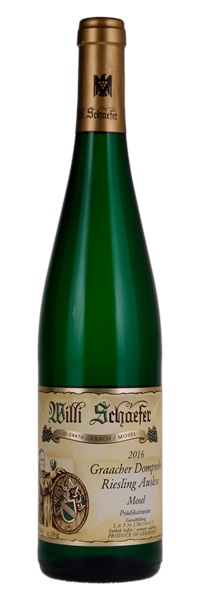Estimate

...very clear, super ripe but still healthy bouquet of perfectly ripe Riesling intermixed with flinty, slightly caramelly aromas. On the palate, this is a lithe yet complex, piquant, refreshingly mineral and highly elegant Domprobst Auslese that reveals a firm, tensioned structure in the long, salty, already stimulating finish.
White tropical flower aromas and a hint of Thai basil in the nose. Concentrated and filigree, succulent and pristine, everything fitting together beautifully. Super-clean finish...
...beautifully pure and refined on the nose, wafting from the glass in a fine blend of pear, white cherry, a lovely underpinning of slate, lime blossoms, a touch of violet and a topnote of bee pollen. On the palate the wine is precise, full and absolutely seamless, delivering a lovely blend of perfectly ripe fruit and slate, with bright, ripe acids, outstanding focus and grip and a very long, very pure and promising finish.
...high levels of sweetness almost overwhelm the palate here, but there is just enough acidic spritz to freshen the finish.